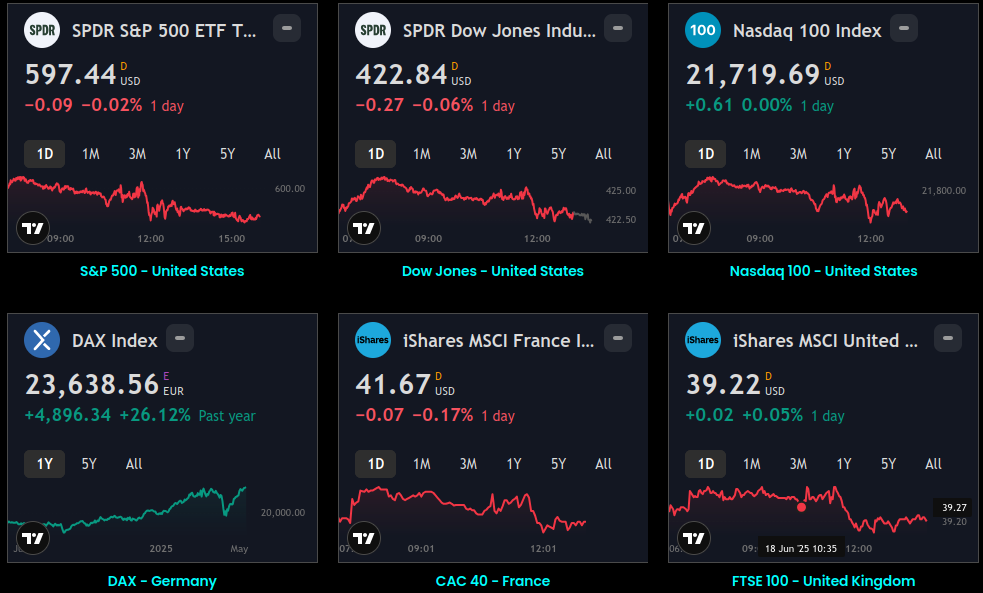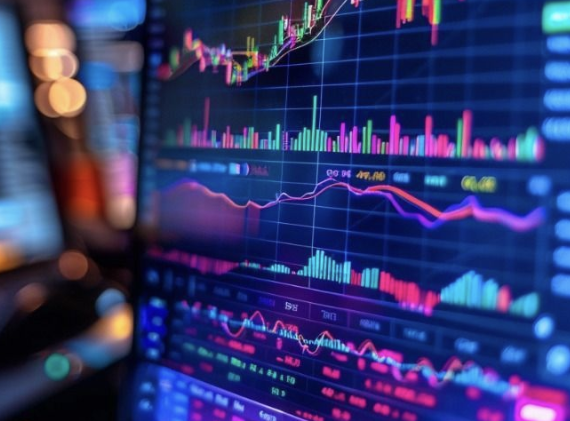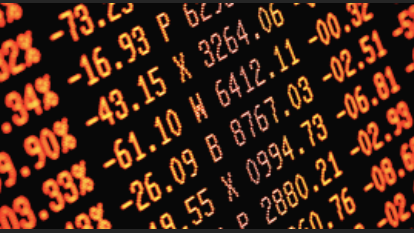WTF Dailies July 21, 2025
US stock futures were flat in Sunday evening trading, as markets entered a critical week defined by megacap earnings and continued risk around President Trump's looming tariffs.

- US stock futures were flat in Sunday evening trading, as markets entered a critical week defined by megacap earnings and continued risk around President Trump's looming tariffs.
- Investor focus is dominated by two topics for the upcoming week: policy clarity on trade and earnings from tech heavyweights. On Sunday, Commerce Secretary Howard Lutnick reaffirmed the White House’s Aug. 1 deadline for new tariffs, calling it a "hard stop" for compliance — before saying that he's looking at continued conversation beyond that date.
- Meanwhile, earnings season shifts into high gear with Alphabet (GOOG) and Tesla (TSLA) set to report Wednesday. These names are the first among the so-called "Magnificent Seven" to report this quarter. Strong results could validate stretched valuations as the market's focus on AI growth is beginning to attract comparisons to historic tech bubbles.
- Of the 59 S&P 500 companies that have already reported, 86% have beaten consensus, a historically strong beat rate, albeit off modest expectations.
- On the macro front, the June Leading Economic Index is set for release Monday. The data will be closely watched for signs of deceleration or stabilization following a string of weak reads.
- Most Asian stocks advanced on Monday with Chinese stocks up after the People’s Bank left a benchmark lending rate at record lows, while Australian stocks tumbled from recent peaks.
- Regional trading volumes were muted on account of a trading holiday in Japan. But futures for the Nikkei 225 index rose 0.2% after Japan’s ruling coalition party, led by Prime Minister Shigeru Ishiba, lost its majority in the upper house.
- Asian markets took middling cues from Wall Street, which closed flat on Friday amid caution over a barrage of key earnings this week. S&P 500 Futures rose 0.1% in Asian trade.
- U.S. President Donald Trump’s August 1 trade tariff deadline also remained squarely in focus, with Washington having signed few trade agreements in recent weeks.
- China’s Shanghai Shenzhen CSI 300 and Shanghai Composite indexes rose 0.4% and 0.5%, respectively, while Hong Kong’s Hang Seng index added 0.5%. Strength in tech stocks saw the Hang Seng reach a three-year high of over 25,000 points.
- The People’s Bank of China left its benchmark loan prime rate unchanged at historic lows on Monday, as widely expected.
- The hold comes amid some expectations that Beijing will slow its pace of monetary stimulus, especially after China and the U.S. agreed to lower their respective trade tariffs against each other in May and June.
- Still, China’s monetary policy is expected to remain largely expansionary, heralding more stimulus support and rate cuts from Beijing as the world’s second largest economy grapples with slowing growth.
- Hong Kong-listed Chinese internet firms were a major outperformer in the past week, especially after artificial intelligence major Nvidia (NASDAQ:NVDA) signaled that it will resume selling a key chip in the country. Nvidia’s chips are crucial for China’s AI ambitions, which are spearheaded by majors such as Alibaba (NYSE:BABA), Baidu (NASDAQ:BIDU), and Tencent Holdings Ltd (HK:0700).
- Broader Asian markets were also largely upbeat on Monday, after a mixed performance over the past week. South Korea’s KOSPI added 0.5%, while Singapore’s Straits Times index surged 0.7% to a record-high 4,225.79 points. Singapore markets have been on a tear amid signs of improving export health for the country.
- Gift Nifty 50 Futures fell 0.1%, pointing to a muted open for the Nifty 50. Indian stocks have whipsawed around the 25,000 point as investors held out for a U.S.-India trade deal.
- Australia’s ASX 200 was by far the worst performer in Asia, tumbling 1% after hitting a series of record highs last week. The ASX was pressured by losses in heavyweight bank and mining stocks, both of which were wallopped by profit-taking after a strong run-up last week.
- Investors grew more concerned that global trade disruptions, due to U.S. tariffs, could disrupt Australia’s export-reliant economy. The country is a major exporter of metals and mineral fuels to China and Europe, both of which are subject to steep U.S. trade tariffs. A surprise decline in Australia’s labor market also raised some concerns about growing cracks in the economy.
Market Close
- Stock markets were mixed on Monday, with the S&P 500 and the Nasdaq modestly positive, while the Dow Jones closed lower. Markets gave up earlier gains as investors await more results from corporate earnings this week. Canadian and European indexes were also mixed as these countries continue to face the uncertainty of tariffs. On a year-to-date basis, however, Canadian and European indexes have outperformed the U.S. market, although the U.S. has played some catch-up since the April 8 lows. Meanwhile, bond yields moved lower on Monday as well, with the 10-year Treasury yield down about 0.04% to 4.38%. This comes as inflation readings in the U.S. last week for the month of June came out in line or even slightly below forecasts.
- The second-quarter corporate earnings season began in earnest last week, and thus far companies have beaten expectations. About 12% of S&P 500 companies have reported earnings, and of these, 86% have exceeded forecasts, well above the 10-year average of 75%. Among these, financial companies have offered the largest upside surprises thus far. While it is early in earnings season still, keep in mind that the bar was reset lower over the last few months, with second-quarter earnings growth expectations falling from about 11% annually at the start of the year to 5% at the end of June.
- While tariff uncertainty remains, particularly ahead of the new August 1 deadline, not yet seen a meaningful impact on inflation, or an outsized impact on consumption or the economy. There could be a number of reasons for this, such as: 1) higher tariff rates have been absorbed across a number of constituents, including by exporters across the supply chain, by corporations absorbing the higher costs, and some costs being passed to the end consumer, 2) many companies have likely stockpiled inventories ahead of tariffs, or even at a 10% tariff rate, and thus can continue to sell goods to consumers at steady price levels, and 3) oil and energy prices move lower this year, with WTI crude oil largely in the $60 - $70 range, for example, which has also helped support lower prices at the pump for consumers and lower energy costs for companies.
- Finally, investors may also be picking up on some positives coming out of ongoing trade negotiations. For example, last week the administration announced it may be loosening export restrictions, which would allow companies like NVIDIA to sell certain AI semiconductor chips into China once again. In addition, companies like Apple have sought deals on rare earth magnets, which are essential for manufacturing electronics, with companies outside of China. And ongoing deals and negotiations with countries like Vietnam and Indonesia should also help secure alternative supply-chain options outside of China. The focus by the administration on trade and tariffs thus may, over time, help open economies to U.S. goods, diversify supply chains, and lower tariff and non-tariff barriers.
Global Indices:

Active Stocks:

Stocks, ETFs and Funds Screener:

Forex:

CryptoCurrency:

Events and Earnings Calendar:

This daily briefing is curated from a wide range of reputable sources including news wires, research desks, and financial data providers. The insights presented here are a synthesis of key developments across global markets, intended to inform and spark thought.
No Investment Advice: This content is for informational purposes only and does not constitute investment advice, recommendation, or endorsement.
Timing Note: Each edition is assembled based on the market context available at the time of writing. Timing, emphasis, and interpretations may vary depending on global developments and publishing windows.

















